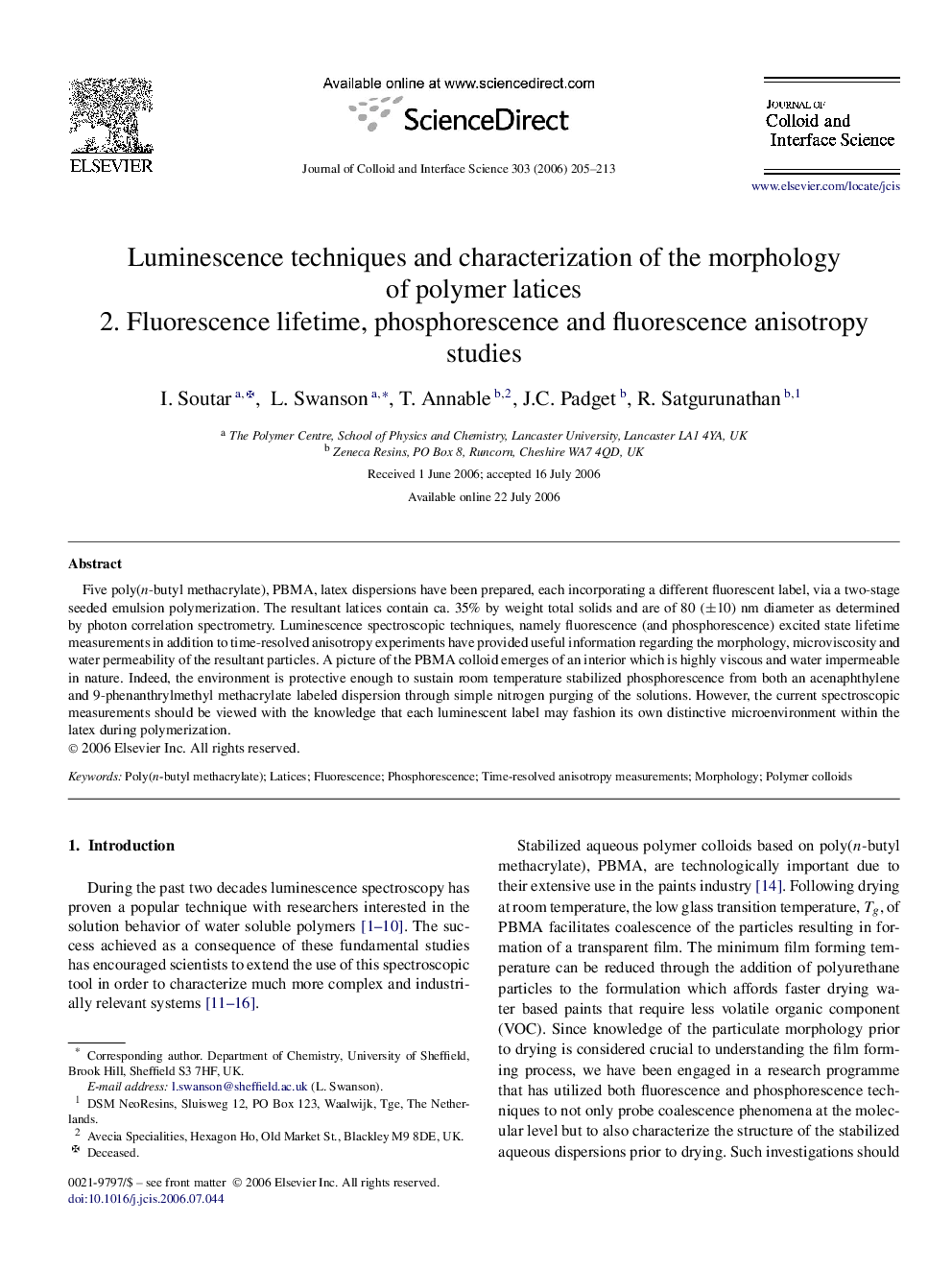| Article ID | Journal | Published Year | Pages | File Type |
|---|---|---|---|---|
| 612810 | Journal of Colloid and Interface Science | 2006 | 9 Pages |
Five poly(n -butyl methacrylate), PBMA, latex dispersions have been prepared, each incorporating a different fluorescent label, via a two-stage seeded emulsion polymerization. The resultant latices contain ca. 35% by weight total solids and are of 80 (±10)(±10) nm diameter as determined by photon correlation spectrometry. Luminescence spectroscopic techniques, namely fluorescence (and phosphorescence) excited state lifetime measurements in addition to time-resolved anisotropy experiments have provided useful information regarding the morphology, microviscosity and water permeability of the resultant particles. A picture of the PBMA colloid emerges of an interior which is highly viscous and water impermeable in nature. Indeed, the environment is protective enough to sustain room temperature stabilized phosphorescence from both an acenaphthylene and 9-phenanthrylmethyl methacrylate labeled dispersion through simple nitrogen purging of the solutions. However, the current spectroscopic measurements should be viewed with the knowledge that each luminescent label may fashion its own distinctive microenvironment within the latex during polymerization.
Graphical abstractThe first reported use of fluorescence time-resolved anisotropy measurements on labeled latex dispersions reveal highly viscous particle interiors. However, the labels may fashion their own local environment during polymerization.Figure optionsDownload full-size imageDownload high-quality image (44 K)Download as PowerPoint slide
